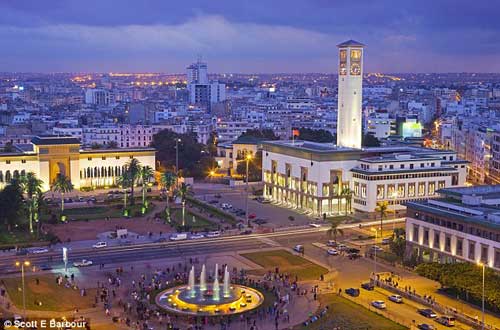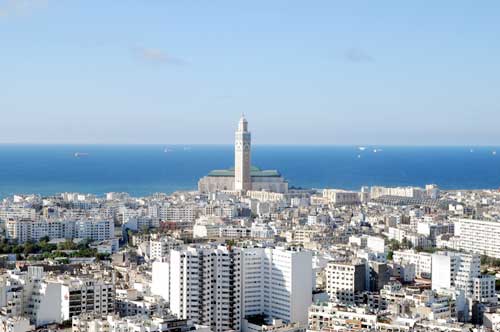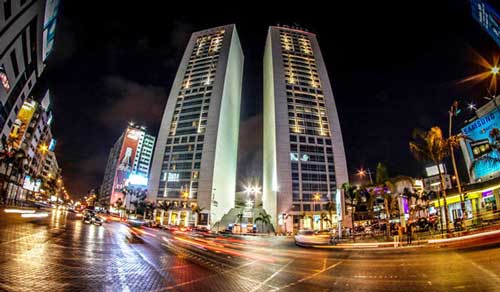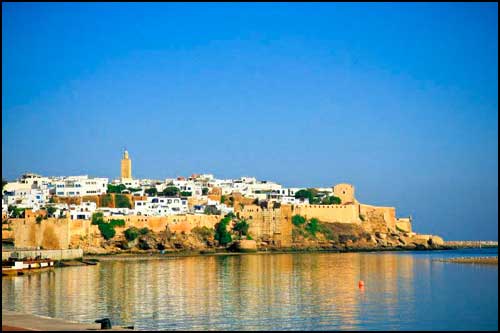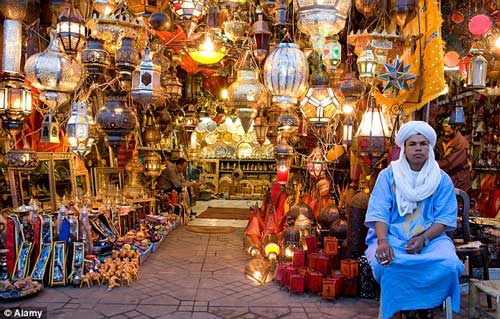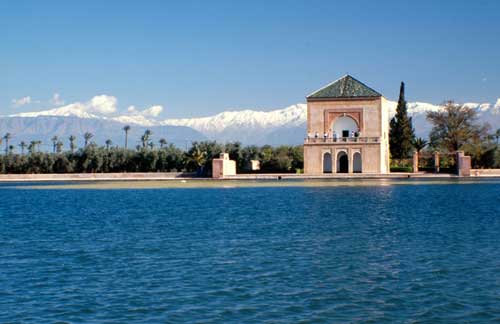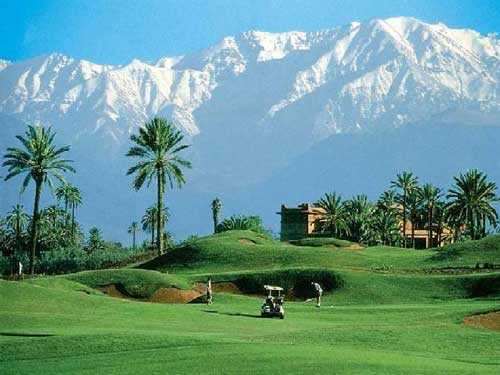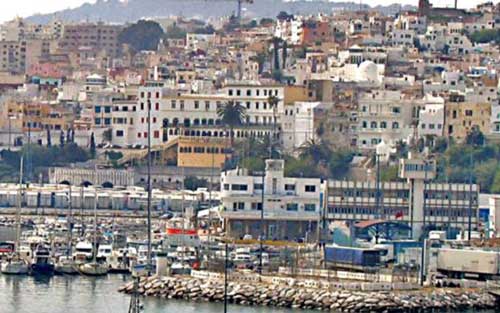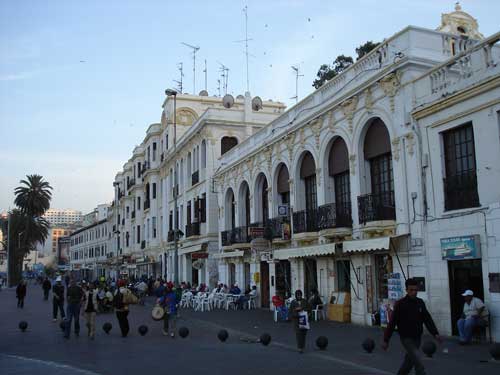Posts about Morocco
Page development is in process. If you are a citizen of this country and would like to help develop the Country Page to show your national pride, please refer to the instructions identified in the Country Page guidelines posted here.
History & Geography
Morocco, about one-tenth larger than California, lies across the Strait of Gibraltar on the Mediterranean and looks out on the Atlantic from the northwest shoulder of Africa. Algeria is to the east and Mauritania to the south. On the Atlantic coast there is a fertile plain. The Mediterranean coast is mountainous. The Atlas Mountains, running northeastward from the south to the Algerian frontier, average 11,000 ft (3,353 m) in elevation.
Morocco has a population of over 33 million and an area of 446,550 km2 (172,410 sq mi). Its political capital is Rabat, although the largest city is Casablanca; other major cities include Marrakesh, Tangier, Tetouan, Salé, Fes, Agadir, Meknes,Oujda, Kenitra, and Nador. A historically prominent regional power, Morocco has a history of independence not shared by its neighbours. Its distinct culture is a blend of Arab, indigenous Berber, Sub-Saharan African, and European influences.
Morocco claims the non-self-governing territory of Western Sahara as its Southern Provinces. Morocco annexed the territory in 1975, leading to a guerrilla war with indigenous forces until a cease-fire in 1991. Peace processes have thus far failed to break the political deadlock.
If we return to the Moroccan history we will understand that Morocco has been the home of the Berbers since the second millennium B.C. In A.D. 46, Morocco was annexed by Rome as part of the province of Mauritania until the Vandals overran this portion of the declining empire in the 5th century. The Arabs invaded circa 685, bringing Islam. The Berbers joined them in invading Spain in 711, but then they revolted against the Arabs, resenting their secondary status. In 1086, Berbers took control of large areas of Moorish Spain until they were expelled in the 13th century.
The land was rarely unified and was usually ruled by small tribal states. Conflicts between Berbers and Arabs were chronic. Portugal and Spain began invading Morocco, which helped to unify the land in defense. In 1660, Morocco came under the control of the Alawite dynasty. It is a sherif dynasty—descended from the prophet Muhammad—and rules Morocco to this day.
Moroccan Arts and Culture
The almost medieval-like hustle and bustle of Morocco is for most travelers a world away from their own cities and towns. The culture and people are usually so completely different from what they know that they often find themselves in situations to which they have no idea how to react. The following brief explanation of Moroccan art and culture is designed to help you get the most out of your stay in this amazing country.
Art
The art of this country is truly special. Many historical examples are on display at the local museums. More modern examples are on display at art galleries and in souks. Beware of cheap imitations though!
There are so many different ways that the people express themselves – in carpets, clothing, jewelry, ceramics, sculpture, painting, carving, and calligraphy. They even hold an international art festival once a year to showcase all their talent. If you ever have the opportunity to visit this country, you should consider buying some of the local artwork. Not only will it provide you with a little memento of your trip, but it will help out the local people who are usually quite poor.
Culture
Souks are a way of life in Morocco and you usually won't have to go far to find one. You can often get good bargains here, but remember that most Moroccans will have a lot more experience than you will when it comes to haggling the price so you will seldom find yourself able to get better than that which is offered.
You may find, if you are friendly and courteous enough, that you will soon start to make friends with the locals. If this happens and you are invited to a meal, it is good to keep in mind some of the local customs. For example, you will usually take off your shoes when entering a house. You can follow your host’s example in this regard. Also it is a good idea to take a gift of some sort with. If you are in a home in the city you might take some pastries or some sugar with you. If you are in the county it would be better to buy a live chicken for the household which is likely to not be quite so well off. A home invitation is perhaps the most authentic way to sample Moroccan dishes. Most Moroccan food is eaten with the hands. If you are invited to join someone for a meal, you should always eat with the right hand as the left is supposed to be used for the toilet.
Any plans to visit mosques will usually meet with failure as these are considered to be very holy places that only Muslims are allowed access to. Though this is allowed in other parts of the world, the closest you will likely get to the inside of a mosque in Morocco is if you visit some ruins or disused mosques such as Tin Mal and Smara. Most other monuments are on view to the public for a price and you can also observe certain celebrations such as the Imichal wedding Fair.
When taking photographs of the local people, it would be wisest to ask their permission. Taking a photograph of someone without their permission – especially in rural areas – can cause offense. This may result in them demanding money from you – even if you only intended to take a scenic shot of something. In contrast, taking photographs of someone you have become friendly with is usually very welcome. Often people with whom you’ve become acquainted will take you to a place where they can get a photograph taken with you for themselves. You should not be unfriendly about this as it usually does not result in you paying for the picture or any further harassment.
Traditionally the men take to the streets and the women are in control of their homes. This means that you will not often find woman in cafés or restaurants. If you are a woman and you strike up a friendship, you will likely be invited to the person’s home or to a hamman (bath) for further association. On the other hand, if you are a man or a man and woman traveling together, you will likely be invited into a café for some tea or a meal.
In general, Moroccan culture can be an exciting and worldly experience. The people are friendly and the place is colorful. Hospitality is really a part of their culture so you can strike up friendships virtually anywhere if you have the right attitude. Usually this results in further association with these dynamic and interesting people and a real taste of Moroccan life.
Moroccan Languages
Although Arabic is a language spoken by hundreds of millions of people in North Africa, the Middle East, and the Arabian Peninsula, the Arabic spoken in Morocco,called darija, is different than in other Arabic speaking countries. When traveling to Morocco bringing along an English/ French - Arabic dictionary will make your Morocco Travel experience more enjoyable. The different dialects of spoken Arabic can best be compared to the range of dialects in the Chinese language. Pronunciations on words vary greatly as well. However, written Arabic is standard and the same throughout the world because it is important that the Qur’an, written in Arabic, be understood by all Arabic speakers. In recent decades, the spread of television and radio has increased Moroccans exposure to Modern Standard Arabic (MSA), adapted from standard written Arabic.
It is not uncommon for a Moroccan person to be a mix of Berber, Arab, Spanish,Black and Jewish descent. As result, over two thirds of Moroccans use Arabic as their first language but may also speak one or more additional languages.
The other one-third of Moroccans includes the Berber population who live in the mountains, in villages within the Middle-Atlas and within remote areas of Morocco. Today, most Berbers understand and speak Arabic but their primary language is Berber. However, as there is no standard Berber language because a standard alphabet was never created, Berber communities cannot communicate well because over three hundred Berber dialects have developed. The main ones include Tarifitspoken among inhabitants of the Rif Mountains, Tamazight is used by Berbers in the Middle and High Atlas Mountains, Tashelhit is spoken by residents of the Anti-Atlas Mountains in central Morocco and Tuareg in the Sahara. Berber tribes use Arabic script or Arabic if they must communicate with one another.
French is also commonly spoken among Berbers and Moroccans. With the exception of the most isolated children, all Moroccans understand and can speak at least a little French. Although Arabic is the national language and used for all formal proceedings in Morocco, international business is often conducted in French and many schools now teach in a mix of French and Arabic.
Morocco’s distance from the Middle East and its history of close contact with European nations have created a spoken Arabic that incorporates many French words and expressions. Morocco’s months of the year are in French and many street names and signs are written in both Arabic and French. Also, as most books in Morocco as written in French, and seldom translated into English, it is often difficult for non- French speaking westerners to find literature from or about Morocco.
In addition to Arabic, Berber and French, it is also common to hear Spanish, German and most recently English in certain areas of Morocco. Until 1965, the Spanish controlled northern Moroccan cities such as Tetouan. Also, because northern Morocco is in such close proximity to Spain, Spanish is commonly spoken in Tangier. In Agadir, a beach resort destination attracting many Germans, German is spoken.
Since the tourism industry is an important part of Morocco’s economy, English is closely linked and used by anyone working in the tourism or hotel industry, thus you should have little trouble traveling in Morocco. While not necessary, if you happen to speak Arabic or French it will make your experience more enjoyable and rewarding. Just speaking a few words of Arabic or knowing a few words of the Berber region you plan to visit will make Moroccans immediately friendlier and impressed because your attempt implies a respect for their culture.
Religious holidays in Morocco
There are two holidays in Islam: Eid Al-Fitr and Eid Al-Adha. The first marks the end of a month of fasting in Ramadan, and the second commemorates the willingness of the Prophet Abraham to obey God and sacrifice his son. Congregational Eid prayers are held on both days.
Islamic holidays in Morocco are noticeably low-key compared to highly-commercialized holidays such as Christmas and Easter. In Morocco it’s acceptable to present small gifts or pocket money to children on Eid, but gift-giving isn’t the holiday’s focus nor is it the norm in every family.
Wealthier Muslim countries and Muslims in the West might hold community-wide fairs and special events to celebrate Eid, but in Morocco the holidays tend to be observed more quietly and privately, with many families following an Eid tradition of buying new clothes for children, preparing sweets and special meals, and paying visits to family.
Other Religious Holidays in Morocco
Some Moroccans celebrate other significant days, such as the Prophet Muhammad’s birthday or the Islamic New Year, but observing them as holidays is not part of the original teachings and traditions of Islam.
Introduction to Moroccan cuisine
While there is no succinct way to define Moroccan cuisine – it emerges from a long and varied history which includes Berber, Arab, Roman, African, Mediterranean and Moorish influences – it’s fair to say that the unique fusion of flavors, ingredients and cooking techniques has rightly earned Moroccan food a reputation as one of the world’s most celebrated cuisines.
Situated along the northwestern coastline of Africa, Morocco originally was home to the Berbers, who are believed to have settled in Morocco more than 5000 years ago. Arabian influences arrived in the 8th century AD, and shortly thereafter, Moorish and Andalusian did as well. More recently, certain aspects of European cuisine were adopted due to the establishment of French and Spanish protectorates. Morocco's geographical location and climate make it ideal for growing or raising most of the foods it needs, with plenty of surplus for export. Almonds, olives and saffron are all indigenous, and a dizzying assortment of cultivated and wild fruits, vegetables and grains as well as easy access to fish and seafood make for rich and varied culinary traditions.
Famous Moroccan Dishes
Couscous, bastilla, tagine and Moroccan mint tea are often highlighted as Morocco’s culinary claims to fame, but in actuality there are countless notable dishes which range from ultra-simple and mildly seasoned to amazingly complex creations prepared from long lists of ingredients. Turmeric, saffron, ginger, paprika, cayenne pepper, cumin, and aromatic spices such as cardamom, cinnamon, mace and nutmeg all come into play, as do fresh herbs such as parsley, cilantro, mint, wild oregano and garlic.
Even in these modern times, home cooking remains a largely traditional and sometimes laborious affair in Morocco. Peas are shelled by hand, spices and herbs are often are ground in a mortar and pestle, grains and nuts are sometimes ground in stone mills, and despite the convenience of bakeries in almost every neighborhood, many urban Moroccans continue to bake their own bread. Perhaps it’s this enduring emphasis on fresh and homemade that partially distinguishes Moroccan cuisine as one of the world’s finest.
And here’s my selection for you, containing the best 10 Moroccan dishes that you should imperatively try if you come to Morocco:
Some pictures of Morocco:
